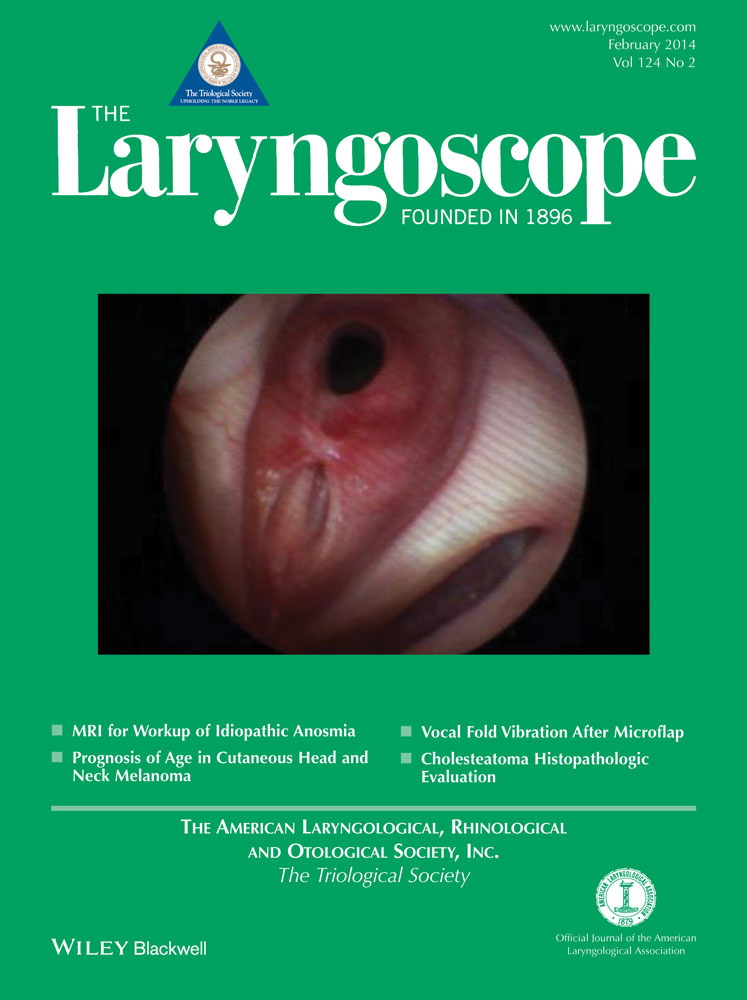Analysis of supraglottic activity during vocalization in healthy singers
Presented at the Triological Society Combined Sections Meeting, Orlando, Florida, U.S.A., April 10–11, 2013.
The authors have no funding, financial relationships, or conflicts of interest to disclose.
Abstract
Objectives/Hypothesis
The present study aims to evaluate the degree of anterior–posterior and medial supraglottic laryngeal compression in healthy singers of different voice classifications while singing different pitches, loudness, and phonatory tasks.
Study Design
Prospective study.
Methods
Thirty-six classically trained singers (11 sopranos, 11 mezzo-sopranos, six tenors, and eight baritones) with at least 5 years of voice training and absence of any voice pathology within the past year were included. Flexible endoscopic voice evaluations were recorded and edited to include samples of different pitches, levels of loudness, and phonatory tasks. Sound was removed from the video samples. Two blinded laryngologists were asked to assess medial and anterior–posterior supraglottic compression using a visual analog scale for each sample.
Results
Medial compression was significantly greater in male subjects and specifically tenors during loud phonation, during high pitch, and while phonating the vowel /a/. Anterior–posterior compression was also significantly greater in males and specifically baritones during loud voice production and with phonation of the vowel /a/. No difference was noted in relation to pitch. Correlation between anterior–posterior and medial compression was demonstrated. Medial compression was less severe than anterior–posterior compression.
Conclusions
Supraglottic hyperfunction is present in healthy singers. Recognizing factors that might affect supraglottic hyperfunction in the healthy voice may help us to understand when hyperfunction is truly contributing to a patient's vocal pathology.
Level of Evidence
4. Laryngoscope, 124:504–509, 2014




